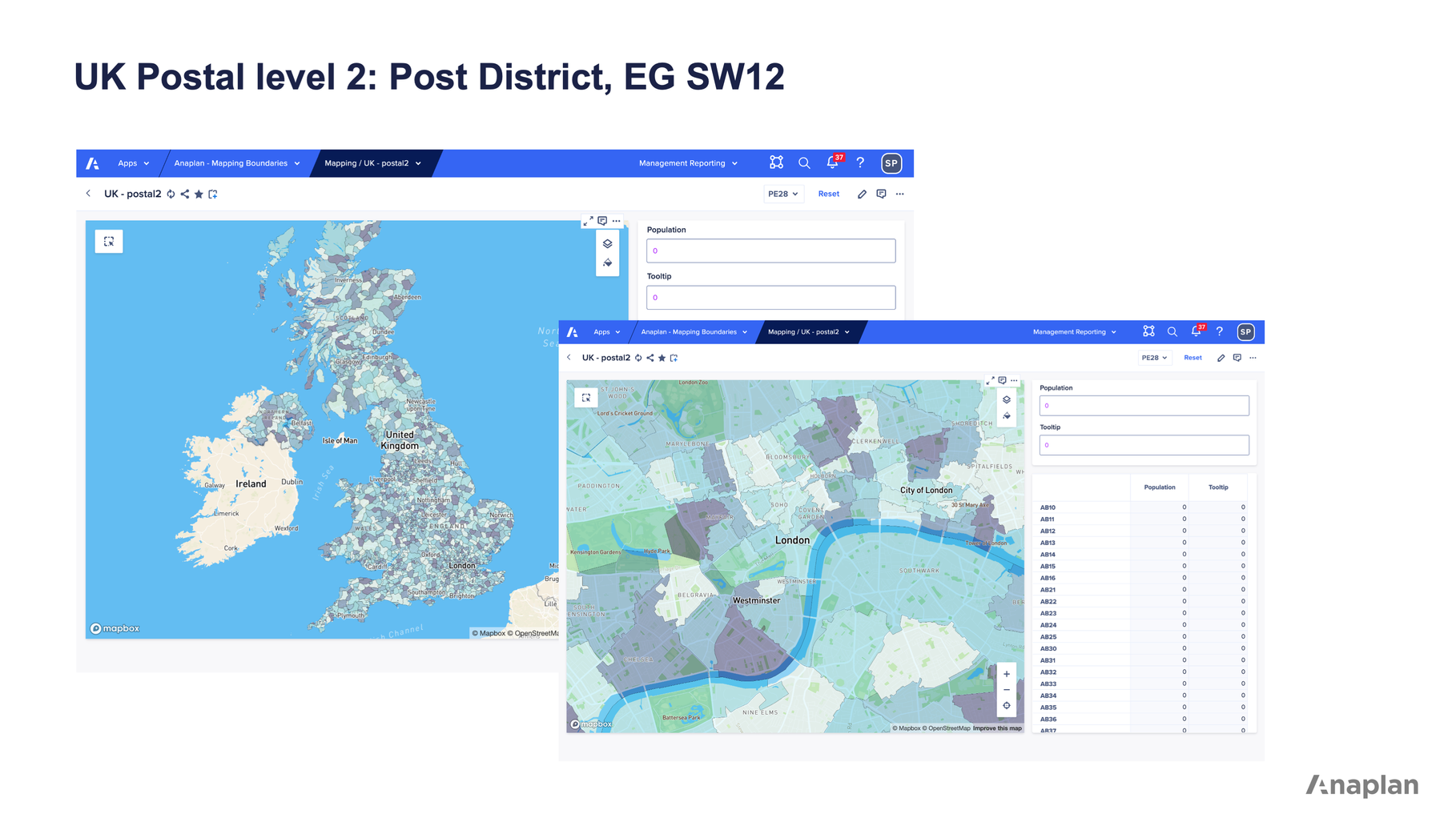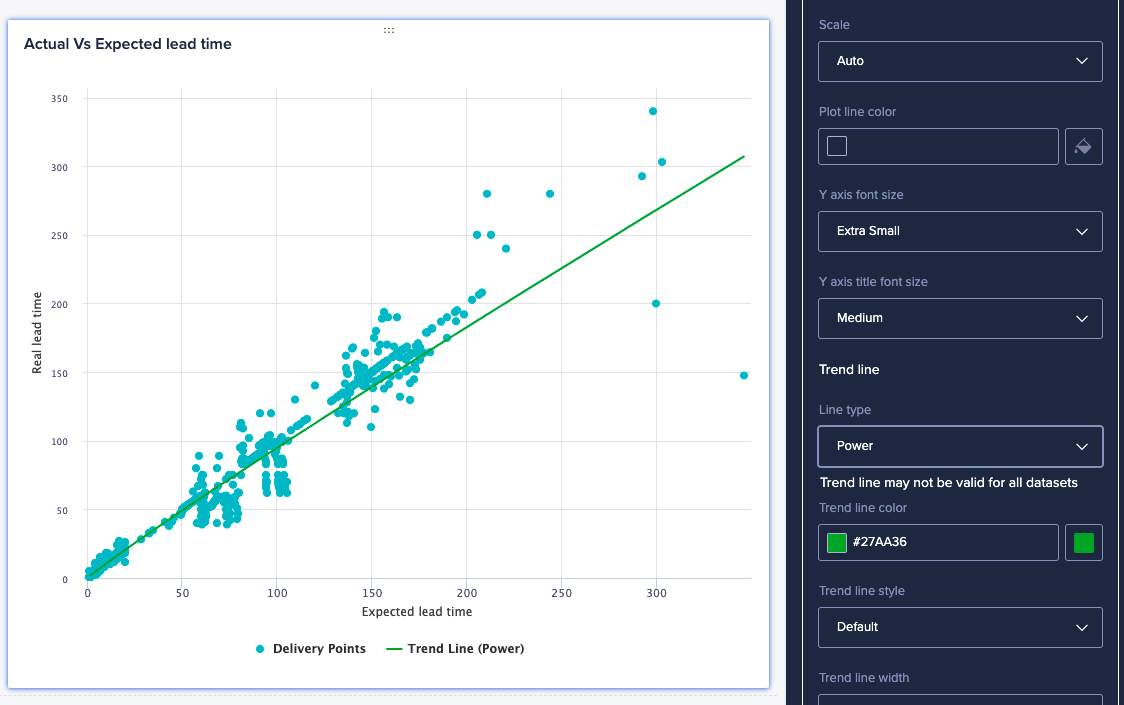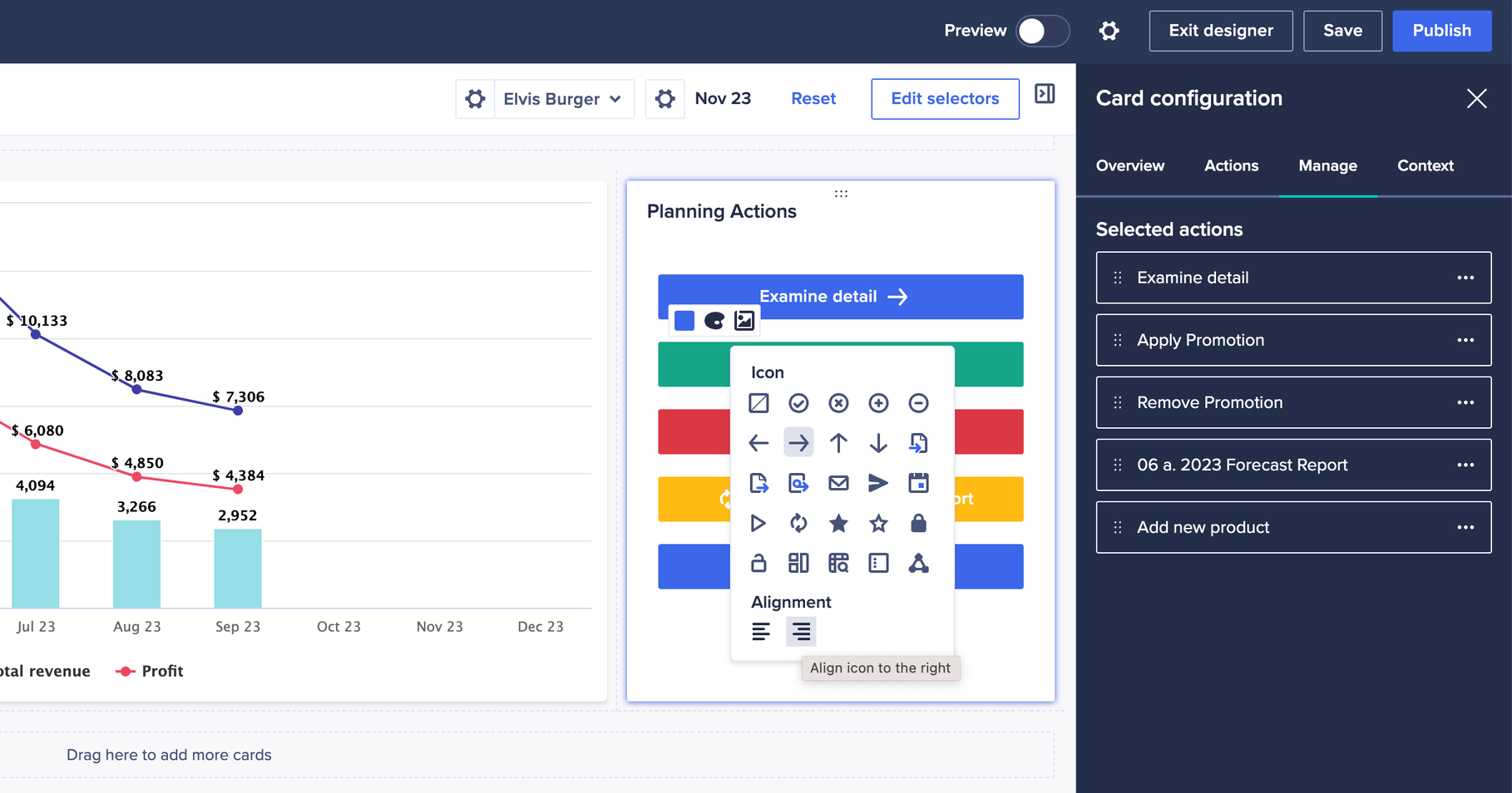
We kicked off the New Year in style with the launch of various new features, including updates to Geo-Mapping and Workflow
Released in January
Geo-Mapping
We have added three new Postal boundaries to our Postal Code SKU offering. Following on from the U.S, we offer the following postal boundaries:
- Canada Postal level 3: Forward Sortation Area (FSA) e.g. V8T.

- UK Postal level 2: Postal District, e.g. SW12

- UK Postal level 3: Post Sector, e.g. SW12 8

Check out the following resources for further information:
Full list of supported boundaries
Boundary download files
30-minute Geo-Mapping training course
Management Reporting
- Slide-level context: You can set the context of a report slide at the slide level. This avoids having to fix the context for each Card individually, both saving time to create and making it easier to maintain.
- Choose the context selectors you want to fix the context for that slide to. You can then choose which dimension all the Cards on that slide will be set to.
See slide-level context in action!
Check out Anapedia for more information.
- Report page settings dialog: We have added a page settings dialog to the report page so it is consistent with all other page types. The revert changes option has been moved to the page settings menu drop-down. The page settings dialog allows you to do the following:
- Rename the page
- Add or change the page source model
- Restrict access to the page based on roles
User Experience
- Scatter / Bubble chart Power trend line: We have added a Power trend line to the existed supported trend lines on the Scatter /Bubble chart. A power trendline is a curved line that's used with data sets that compare measurements that increase at a specific rate — for example, the acceleration of a race car at 1-second intervals. Below is a list of the currently supported trend lines.
Check out Anapedia for more information.- Linear
- Exponential
- Polynomial
- Logarithmic
- Power

- Card toolbar clean up: We have tidied up the Card toolbar so there's consistency across Cards in the Boards and Worksheets.
- Maximize has moved to the far right of the toolbar on all Cards
- Export and other actions have been moved to the right on expanded Cards in a Worksheet
- Info tooltip has been added to all Cards on a Worksheet
- Restore a deleted App page: It's possible to restore a deleted App page providing it was deleted in the last 60 days:
- Go to the Restore pages section on the Apps Content Page
- Select the Pages you want to restore
- The page will then be restored
Check out Anapedia for more information.
- Increased recipients for notification actions: When adding recipients to a notification action button, you can add up to 50 different users to receive the notification. This was previously limited to 20.
- Action button icon alignment: Since we released the navigation action, many of you have asked for the ability to change the position of icons on your buttons to help create more intuitive "next" and "back" buttons on your pages. You can do this using the alignment options when you pick an icon!

Workflow
- Hierarchy task force-complete: We’ve given Workflow Owners additional rights to help them force-complete items in a hierarchy task, should blockages occur.
- Archive completed workflow runs: Historical workflow runs can be archived (they’re not deleted, just hidden away) to help keep a cleaner list and interface.
- Audit integration: Key workflow and task activities are logged in our centralized Audit component, making auditing and compliance of workflow-based business processes even easier.
- Complete workflow activity export: If the data being captured in the Audit component isn’t quite enough, you can export a log of everything that happened as part of a workflow run in CSV format. Everything is timestamped and attached to unique user IDs.
- Tasks are called “steps” in the template builder: To pave the way for future enhancements, we’ve renamed the building blocks of Workflow templates from “tasks” to “steps”. There’s no change in behavior or functionality, but you might notice a slight change in text labels.
- Tasks can be dragged into templates: To make building templates even easier, you can drag steps from the panel on the right directly into your templates, similar to adding cards to UX pages.
- Hierarchy task skips levels: When you're building a top-down or bottom-up process based on a hierarchy, you might not want every level in the hierarchy to be engaged in the task. You might, for instance, want to bypass a level of management and progress approvals straight to senior management, skipping team leaders. You can choose levels in your hierarchy to omit from the task and we'll automatically skip them when the task runs.
Targeted for February
Disclaimer: Please note: The information here is subject to change right up to release go-live time. This post is not a commitment to provide any features by a certain time frame and enhancements to the product may change before release.
User Experience
- Gantt chart enhancements: More control over the time axis for Gantt Charts to focus in on the relevant time windows.
- Chart Drill down: We are expanding the drill down (F8) functionality to work on chart data points as well as grid cells to enable you to easily see the breakdown or formula for any data points.
- Enhanced context handling with dynamic notification actions: When context selections required to identify a recipient don't already exist on the page, currently, users are asked to provide this additional context in a small pop-up window before the notification can be sent. The new behavior, in addition to the pop-up, will analyze the action when the page loads and add any missing context selectors to the page, where they can be adjusted before the action is triggered.
- Conditional navigation actions: Page builders will be able to define different destination pages for their navigation action buttons based on the properties of their selected list/context item.
- End user Show/Hide enhancements: End user enhanced selections will bring parity to the UX and Classic Dashboard by providing end users with the ability to right click to Show/Hide, allowing them to apply a ragged selection and reorder items on a grid.
Workflow
- Hide reject: We’re adding a new option for template builders to decide whether certain approvals or decision tasks can be rejected or not, providing more flexibility for how Workflow can map against existing business processes.
- Stop on reject: Currently, rejecting a task will flag the task as “rejected” and will move the process to the next step. This isn’t always how customers want to handle rejected tasks, so we’re adding an option for builders to decide whether the workflow should stop or proceed when something's rejected.
Planning and Modeling
- Top-level and subsets for the users list: Model builders will be able to leverage the users list similarly to other lists in the model. They'll do so by applying a top level to enable summing, and to create subsets to be used as applies to in modules or line item formats.
- Dynamic bulk copy action: Model builders will be able to provide more flexibility to end users by enabling a bulk copy action to be dynamic. This will enable end users to select the source and target based on the list the bulk copy action is created with.
- New Modules Inventory: We will be releasing a beta version of the modules inventory UI that model builders can opt in to use to begin performing better analysis on their modules. This includes features like sorting by module attribute and selecting the order of the attributes.
- Fine Grain History Search: Model Builders can specify the exact date and time when looking through model history.
Upcoming scheduled maintenance:
- February 17: Platform offline: Platform enhancements
- February 24: Platform offline: Infrastructure updates
Have questions or looking for an update? Stay in touch:
- Stay up-to date with upcoming downtime releases at status.anaplan.com
- Review all of our scheduled platform maintenance windows in the Release Calendar


